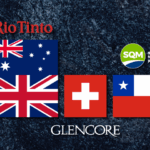Tuesday night’s MSCI decision could change the face of global investing
Ahead of MSCI’s announcement, KraneShares’ CIO – Brendan Ahern, reflects on what he has learned about investing in China
Tomorrow night, June 9th at 5:00pm Eastern Standard Time, MSCI, a leading provider of index solutions globally, will make an announcement that has the potential to change the face of global investing as we know it. MSCI will announce the results of their year long consultation on the inclusion of the onshore China markets within their definition of China. This definition rolls up into MSCI's broad-based international indices. We previously wrote a detailed piece about the ramifications of the potential inclusion.
A note from KraneShares' CIO – Brendan Ahern
In the final hours before the decision is announced, I am compelled to take a moment to reflect on some of KraneShares’ accomplishments as a firm. KraneShares has taken a forward-looking approach to our product development. Together with our Mainland Chinese partners we have strived to take public signals from China’s leadership and translate them to real investment opportunities for our shareholders around the globe.
We build products that coincide with concrete events that take place as China opens up its markets. Let’s take a look at a few events that have already passed, a few that are pending, and the corresponding products we have developed to potentially benefit from them.
Tomorrow night’s MSCI decision on the potential inclusion of the onshore Chinese markets
MSCI's pending decision regarding the onshore markets has garnered a lot of media and investor attention over the past few months. Though the idea is gaining momentum now, it was obscure and seemingly far-fetched in March of 2014. Back then, the onshore markets were still in the grips of a seven-year bear market, Renminbi Qualified Foreign Institutional Investment quota (RQFII)1 was extremely rare, and the Shanghai-Hong Kong Stock Connect Program2 had yet to be implemented. However, we believed the opportunity presented by a potential MSCI inclusion of the onshore markets was so great that we proceeded to launch a product to capture the off chance it might happen.
We launched the KraneShares Bosera China A ETF (Ticker : KBA) on March 4, 2014, just three months before the commencement of the onshore China market rally, which has since returned 127% since KBA’s inception3 as of 6/1/2015. KBA is currently the only ETF with onshore exposure to track an MSCI index4 – the MSCI China A International Index – which represents the exact securities that MSCI may decide to include into their broad indices. As we have written before, this could mean hundreds of billions of potential inflow into the exact securities KBA owns today.
The Five-Year Plan
One of KraneShares’ foundational beliefs is that the key to success when investing in China is following signals from China’s leadership on the sectors and industries it has targeted to support. Every five years the government issues its Five-Year Plan where it outlines these goals. Our observations surrounding the importance of the Five-Year Plan led us to develop our first product, the KraneShares CSI New China ETF (Ticker : KFYP). We launched KFYP in July of 2013; since then it has exhibited strong performance. We previously wrote a white paper about the significance of the Five Year plan.
The Alibaba* IPO
China is in the midst of an ecommerce revolution. The massive rate of internet adoption, paired with growing domestic consumption in China, has resulted in the rapid ascent of what is now the world’s largest population of internet users5. One company that has led the charge in capitalizing on this phenomenon is Alibaba. We listed the KraneShares CSI China Internet ETF (ticker : KWEB) nearly two years ago – thirteen months in advance of Alibaba’s record breaking IPO. We were the first China ETF and first technology ETF to hold shares in Alibaba6. Amazingly, we are still one of the only ETFs or index funds to hold Alibaba to this day. Later this year, Alibaba and other U.S-listed Chinese companies will experience a significant increase in ETF and index fund exposure when MSCI includes these companies within their definition of China. We previously wrote an article outlining the impact that the inclusion will have on U.S-listed Chinese companies.
Renminbi (RMB) internationalization and a pending decision from the International Monetary Fund (IMF).
Perhaps one of the strongest immediate goals of China’s leadership today is getting its currency, the renminbi (RMB), included within the IMF’s Special Drawing Rights (SDR). The SDR is a basket of reserve currencies that each IMF member country's central bank must hold in reserve. China is motivated to have its currency included within the SDR because it helps with one of its primary goals – RMB internationalization.
China ultimately wants its currency to be used in settling international transactions without first having to be converted to U.S. dollars. This goal has gained priority since 2008 when China, the largest holder of U.S. debt7, was negatively impacted by the financial crisis. You can read more about the IMF’s decision and its potential impact on the RMB by reading our previous article. We believe the RMB could potentially appreciate against the U.S. dollar ahead of the IMF’s decision, which is slated to take place in October 2015. We created the KraneShares E Fund China Commercial Paper ETF (Ticker : KCNY) to provide investors with direct exposure to the RMB. KCNY holds investment grade China commercial paper8, with attractive yields and minimal duration risk.
Bringing it all together within a broad emerging market strategy.
Through our numerous conversations with clients we realized that many people did not break out individual countries within their portfolios. Many investors instead prefer to get their China exposure within a broad emerging market (EM) strategy. We realized that these investors did not have a suitable investment vehicle to gain exposure to not only U.S-listed Chinese companies, like Alibaba, but also the onshore Chinese exchanges of Shanghai and Shenzhen. We created the KraneShares FTSE Emerging Markets Plus ETF (Ticker : KEMP) to provide investors access to these segments of the Chinese markets within a broad EM strategy. We were among the first broad EM ETFs to include U.S-listed Chinese companies, and the first to include the onshore markets9. We created a webinar to educate investors about KEMP and current trends in emerging markets.
Tomorrow night MSCI will announce the results of its historic decision; regardless of what the results may be, we believe our forward–looking approach to investing in China will continue to serve our shareholders well. Our products have consistently captured key themes from China’s opening up– before they become mainstream news. We are committed to our study of the Chinese markets and, alongside our Mainland Chinese partners, we seek to translate our observations into real investment opportunities. KraneShares delivers innovative financial products to global investors that capture the true drivers of China’s growth.
*Alibaba was 10.65% of KFYP net assets, 7.53% of KWEB net assets and 0.72% of KEMP net assets as of 06/01/2015. Holdings are subject to change.
- RQFII – RQFII is the renminbi qualified foreign institutional investor scheme. Launched in December 2011 it allowed a small number Chinese financial firms to establish renminbi-denominated funds in Hong Kong for investment in the mainland. The aim being to allow overseas investors to use offshore renminbi deposits to invest in mainland securities markets
- Shanghai-Hong Kong Stock Connect Program – is a cross-boundary investment channel that connects the Shanghai Stock Exchange and the Hong Kong Stock Exchange. Under the program, investors are able to trade shares across both markets using their local brokers and clearing houses. The program launched in November 2014
- Return based of the MSCI China A International Index from KBA’s inception 3/4/2014 through 6/1/2015. MSCI China A International Index Definition: The MSCI China A International Index captures large and mid-cap representation and includes the China A-share constituents of the MSCI China All Shares Index. It is based on the concept of the integrated MSCI China equity universe with China A-shares included.
- Source for KBA being the only ETF with onshore exposure to track an MSCI index ETF – ETF Trends, “What Would A-Shares Look Like in Broad EM ETF? The Answer Already Exists” 6/3/2015
- Source: China Internet Network Information Center (CINIC) as of 12/31/2014, issued on 2/03/2015.
- Source for KWEB being the first China ETF and technology ETF to hold Alibaba – Barron’s, “KraneShares Fund First China, Tech ETF To Own Alibaba” 10/3/2014
- Source: U.S. Treasury Department as of January 2015
- For purposes of the Underlying Index, investment grade commercial paper is commercial paper that is issued by an issuer whose long-term bonds are rated AAA or equivalent by one or more Chinese credit rating agencies; or commercial paper that is issued by an issuer whose long-term bonds are rated AA+ or equivalent by one or more Chinese credit rating agencies and commercial paper is rated A-1 or equivalent by one or more Chinese credit rating agencies
- Source for KEMP being the first Emerging Market ETF to have onshore China exposure – ETF Trends, “What Would A-Shares Look Like in Broad EM ETF? The Answer Already Exists” 6/3/2015
KWEB, KFYP & KEMP invest in variable-interest entities (VIEs), which are investments in foreign-domiciled American Depository Receipts (ADRs). Rather than owning Chinese-domiciled entities, the VIEs have contractual arrangements designed to provide the economic benefits related to certain Chinese-domiciled companies. The structure of VIEs presents some unique risks that should be considered.
VIE structures do not give investors ownership in the operating company, as stock does. With a VIE, an investor has no direct claim on the core, restricted business assets of the VIE operating company. As a result, investors may not exert as much influence over the subject company as they could if they were owners of common stock. Often, the voting rights in the VIE operating company, especially in matters of corporate governance, are controlled by the principals who established the VIE operating company.
In addition, there is no guarantee as to the enforceability of the VIE structure, as it has never received explicit approval from the Chinese government and is recognized as a structure put in place principally to work around Chinese restrictions on foreign investment.










